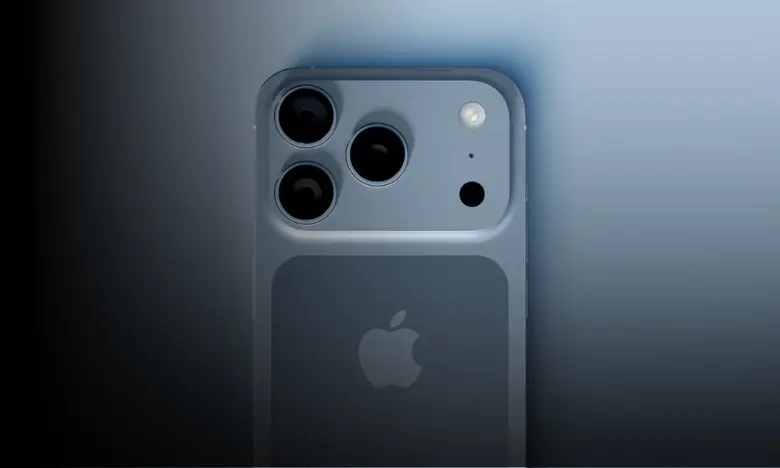Table of Contents
Introduction: iPhone 17 Pro Vapor Chamber
Apple’s upcoming iPhone 17 Pro vapor chamber upgrade has created a huge buzz in the tech world. For years, iPhone users have complained about overheating during gaming, long 4K video recordings, or intensive AI tasks. With the new cooling technology, Apple promises a significant leap in thermal performance. But what does this mean in practice? And why is the vapor chamber so important?
In this article, we’ll break down seven powerful facts about the iPhone 17 Pro’s rumored vapor chamber cooling system—its design, purpose, benefits, comparisons, and what it means for the future of Apple devices.
1. A Major Leap in Cooling Technology
Until now, iPhones relied on graphite sheets and clever chassis design to manage heat. This worked for casual use but often led to thermal throttling during heavy workloads.
The iPhone 17 Pro vapor chamber changes that. It works like a mini radiator: liquid inside the chamber evaporates when the chip heats up, then spreads across the copper plate, where it condenses back into liquid, carrying heat away efficiently. This process allows the iPhone to remain cooler for longer, especially in demanding tasks like:
- AAA mobile gaming
- 8K video recording
- Pro-level video editing
- Running AI and machine learning apps
2. The A19 Pro Chip Demands Better Cooling
Apple’s new A19 Pro chip, built on TSMC’s advanced 3 nm N3P process, is expected to deliver record-breaking performance. But with greater power comes more heat.
Without a vapor chamber, the chip would hit thermal limits quickly. With the iPhone 17 Pro vapor chamber, sustained performance is possible—meaning consistent frame rates in games and reliable speeds for creative pros.
3. Exclusive to the Pro Models
Leaks suggest that only the iPhone 17 Pro and iPhone 17 Pro Max will feature the vapor chamber cooling system. The standard iPhone 17 and iPhone 17 Air models may stick to traditional methods.
This exclusivity continues Apple’s trend of giving its Pro models advanced hardware, appealing to power users and tech enthusiasts.
4. Competing With Android Rivals
Apple isn’t the first to use vapor chambers—Samsung’s Galaxy S25 Ultra and other Android flagships already rely on them. However, Apple’s approach is rumored to be more compact and efficient, designed to fit within the slim iPhone body without adding bulk.
A quick comparison:
| Feature | iPhone 16 Pro | iPhone 17 Pro Vapor Chamber | Samsung Galaxy S25 Ultra |
|---|---|---|---|
| Cooling system | Graphite sheets | Copper vapor chamber | Vapor chamber |
| Chip | A18 (3 nm) | A19 Pro (TSMC 3 nm N3P) | Snapdragon 8 Gen 4 |
| Sustained performance | Limited under load | Stable during gaming/AI | Stable during gaming/AI |
| RAM | 8 GB | 12 GB | 12–16 GB |
5. Real Benefits for Users
Why should you care about the iPhone 17 Pro vapor chamber? Because it makes a direct difference in everyday use.
Benefits include:
- No more hot hands during gaming
- Smoother 8K recording without overheating shutdowns
- Longer device lifespan due to cooler components
- Better AI and multitasking performance
- Improved battery efficiency (less energy wasted as heat)
In short, this is not just a geeky hardware tweak—it impacts real-world usability.

6. Backed by Trusted Leakers and Analysts
Reliable sources like Ming-Chi Kuo, Majin Bu, and Instant Digital have all hinted at the vapor chamber upgrade. While Apple hasn’t confirmed it yet, the consistency of leaks across multiple outlets gives credibility to the rumor.
These analysts suggest the vapor chamber may also prepare the iPhone for Apple Intelligence, Apple’s on-device AI suite, which demands sustained performance without overheating.
Read a guide on modern gaming projector:
7. A Glimpse Into the Future of iPhones
The iPhone 17 Pro vapor chamber is more than a one-off improvement—it signals a shift in Apple’s design philosophy. Cooling is becoming just as important as raw performance.
This upgrade could pave the way for:
- More powerful chips in future iPhones
- Advanced AI and machine learning features
- Extended gaming and creative workloads without compromises
- Possible integration into future iPads and MacBooks
Pros and Cons of the Vapor Chamber
Pros
- Sustained performance without throttling
- Cooler surface temperatures
- Enables new high-power features
- Increases device longevity
Cons
- Likely limited to Pro models only
- May increase repair complexity
- Still unconfirmed until Apple’s keynote
Frequently Asked Questions (FAQ)
Q1: What is the iPhone 17 Pro vapor chamber?
It’s a new thermal cooling system that spreads heat more efficiently than graphite sheets, keeping the iPhone cooler during intensive tasks.
Q2: Does the vapor chamber make gaming better?
Yes. The iPhone 17 Pro vapor chamber helps maintain stable frame rates by preventing the A19 Pro chip from overheating.
Q3: Is it available on all iPhone 17 models?
Current leaks suggest it’s exclusive to the Pro and Pro Max.
Q4: How does it compare to Samsung’s Galaxy S25 Ultra?
Both use vapor chambers, but Apple’s design may be more compact and integrated with the iOS ecosystem.
Q5: Does this mean longer battery life?
Indirectly, yes—since cooler chips waste less energy, battery efficiency improves.
Conclusion
The iPhone 17 Pro vapor chamber is shaping up to be one of Apple’s most important upgrades in years. By addressing thermal performance, Apple ensures that the A19 Pro chip, advanced cameras, AI tools, and gaming features can all run at their best.
While we’ll need Apple’s September keynote for confirmation, the signs are clear: the vapor chamber marks the beginning of a new era in iPhone cooling technology. And for users, that means more power, less heat, and a smoother experience.

